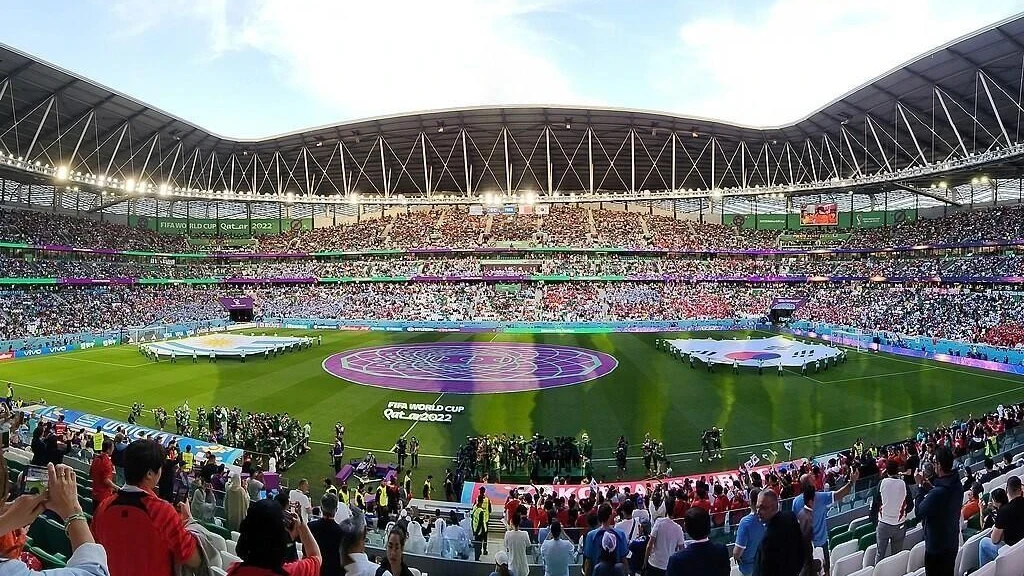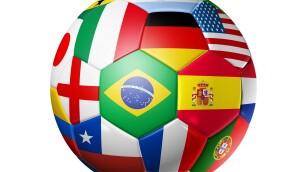
I've spent over 20 years inside the betting industry. I'll guide you to avoid the hype, ignore the noise, and steer clear of the common pitfalls that catch out everyday punters.
When the World Cup bidding process announced Qatar as its host for 2022, many asked how the tournament would be held in such oppressive summer heat. While the answer to the question was rather simple, the staging would take place in the winter instead.
A solution that was largely derided by the footballing world. With the World Cup usually taking place in the months of June and July, supporters around the globe were aghast at such a scheduling switch and many would demand a different host be put in place instead.
However, such a decision to hand the hosting baton to Qatar was made 12 years ago and with the dust finally settling on this heated debate, the tournament itself is now in full swing. While somewhat ironically, you can bet on the weather not being considered an issue at all.
Although the weather conditions have not been as brutal as first envisaged, a difference in temperature can still be a factor in how nations perform on the biggest stage, and this is something that we have looked at in our latest analysis piece.
Analysis that looks at the temperature difference between a nation that appears at the World Cup and where they are playing their fixtures. From such research, we will see whether the blazing sun really does have a bearing on performances or not.
Methodology
To carry out such research, we need to offer up a methodology and it looks as follows:
-
Log every World Cup result since the start of the competition in 1930 (penalties and extra-time do not count as tiebreakers)
-
Log the average temperature for each competing nation for the months of May, June, and July
-
Log the average temperature for each month that the World Cup held a fixture – e.g Uruguay, July 1930 had an average temperature of 10.2c
-
Take the month of when the World Cup fixture was placed and take two figures
-
First take the average temperature for the year and month that a World Cup fixture was played
-
Then take the average monthly temperature of a competing nation, relevant to the month of the World Cup fixture
-
An example would look as follows: Uruguay, July 1930 had an average temperature of 10.2c. France played Mexico in the 1930 World Cup in Uruguay (month July). France’s average weather in July is 19.71c and Mexico’s is 25.44c
-
Calculate the differences in temperature
-
Calculate win/draw/loss records
-
Average temperature differences
All data before the start of the 2022 World Cup
World Cup Weather Data Analysis
Now that the methodology is in place, we can now begin to dissect the results. First, we can look at this from a point of the most successful nations and to remove any outliers, any nations included must have played at least 10 World Cup matches (Top 21 nations in table)
| Team 1 | P | W | D | L | W % | Average W |
|---|---|---|---|---|---|---|
| Brazil | 109 | 73 | 18 | 18 | 66.97% | -6.73 |
| Germany | 47 | 31 | 6 | 10 | 65.96% | 1.92 |
| West Germany | 62 | 36 | 14 | 12 | 58.06% | -0.41 |
| Italy | 83 | 45 | 21 | 17 | 54.22% | -2.25 |
| Netherlands | 50 | 27 | 12 | 11 | 54.00% | -0.13 |
| Argentina | 81 | 43 | 15 | 23 | 53.09% | 7.85 |
| France | 66 | 34 | 13 | 19 | 51.52% | -0.57 |
| Turkey | 10 | 5 | 1 | 4 | 50.00% | -0.05 |
| Soviet Union | 31 | 15 | 6 | 10 | 48.39% | 3.41 |
| Croatia | 23 | 11 | 4 | 8 | 47.83% | -3.28 |
| Spain | 63 | 30 | 15 | 18 | 47.62% | -2.57 |
| Poland | 34 | 16 | 5 | 13 | 47.06% | -1.70 |
| Hungary | 32 | 15 | 3 | 14 | 46.88% | -6.04 |
| Portugal | 30 | 14 | 6 | 10 | 46.67% | -4.61 |
| Denmark | 20 | 9 | 5 | 6 | 45.00% | 5.40 |
| Yugoslavia | 37 | 16 | 8 | 13 | 43.24% | -5.48 |
| Uruguay | 56 | 24 | 12 | 20 | 42.86% | 3.35 |
| England | 69 | 29 | 21 | 19 | 42.03% | 3.39 |
| Belgium | 48 | 20 | 9 | 19 | 41.67% | 2.73 |
| Austria | 29 | 12 | 4 | 13 | 41.38% | -1.12 |
| Colombia | 22 | 9 | 3 | 10 | 40.91% | -4.58 |
As you can see it is Brazil who has the highest win percentage in the history of the World Cup. After making 109 finals appearances before 2022, the South American nation has gone on to win 73 of them. When they win, they do so at an average temperature which is -6.73c cooler than back home.

Something that suggests that the five-team winners of the competition are not affected by the conditions and with the talent that they have at their disposal they are just as capable of winning in Europe or any other continent.
When it comes to European nations, they lock out the next four positions on the table. Although there is a caveat that comes with Germany and West Germany – for the purposes of this research they have been treated as different entities.
The current version of the World Cup giants currently wins matches at an average temperature that is 1.92c hotter than back home. The previous iteration of all things Deutschland won by an average temperature that was -0.41c cooler.
While things were slightly cooler when you look at both Italy and the Netherlands, when they win World Cup matches, they do so at average temperatures that are -2.25 and -0.13 cooler than their own respective recordings.
Of course, it would not be a World Cup table without mentioning England, and of the 29 matches that they have won at the tournament before 2022, they do so at an average temperature that is 3.39c warmer than the average temperatures in blighty.
Although it probably stands to reason that the best nations in world football are unlikely to be too hampered by the weather. It is no coincidence that there is no correlation between any of the top five.
Brazil winning with a lower average temperature makes sense when you consider their temperate conditions across the months of May through to July and therefore, a negative value is of no real surprise.
On the flip side, you would imagine that the European nations that also make up the top five may have positive values by comparison. However, it is only Germany (modern-day) that wins matches at a warmer average temperature than its own.
This means we may find more nuggets of information when looking at the teams that have the worst record at the World Cup. Again, we will remove any outliers, and therefore, all nations must have played at least 10 matches. (Top 21 nations in table)
| Team 1 | P | W | D | L | W % | Average W |
|---|---|---|---|---|---|---|
| Bulgaria | 26 | 3 | 8 | 15 | 11.54% | -0.27 |
| Australia | 16 | 2 | 4 | 10 | 12.50% | -0.94 |
| Morocco | 16 | 2 | 5 | 9 | 12.50% | -0.84 |
| Iran | 15 | 2 | 4 | 9 | 13.33% | -12.85 |
| Tunisia | 15 | 2 | 4 | 9 | 13.33% | -16.76 |
| Republic of Ireland | 13 | 2 | 8 | 3 | 15.38% | 5.62 |
| Scotland | 23 | 4 | 7 | 12 | 17.39% | 1.72 |
| Cameroon | 23 | 4 | 7 | 12 | 17.39% | -6.03 |
| South Korea | 34 | 6 | 9 | 19 | 17.65% | -2.18 |
| Saudi Arabia | 16 | 3 | 2 | 11 | 18.75% | -15.59 |
| Greece | 10 | 2 | 2 | 6 | 20.00% | -3.23 |
| Northern Ireland | 13 | 3 | 5 | 5 | 23.08% | 0.41 |
| Algeria | 13 | 3 | 3 | 7 | 23.08% | -10.63 |
| Japan | 21 | 5 | 5 | 11 | 23.81% | -4.04 |
| United States | 33 | 8 | 6 | 19 | 24.24% | -1.30 |
| Paraguay | 27 | 7 | 10 | 10 | 25.93% | -2.76 |
| Peru | 18 | 5 | 3 | 10 | 27.78% | -2.89 |
| Costa Rica | 18 | 5 | 5 | 8 | 27.78% | -2.93 |
| Mexico | 57 | 16 | 14 | 27 | 28.07% | -6.67 |
| Russia | 14 | 4 | 4 | 6 | 28.57% | 3.49 |
| Nigeria | 21 | 6 | 3 | 12 | 28.57% | -9.29 |
It does not make good reading for Bulgaria as they have the lowest win percentage of all the nations that have played at least 10 matches in the World Cup finals. However, it does look as if the weather is a determining factor. Of the three matches they have won, the average difference is just -0.27c.
While the same can be said for Australia and Morocco. Two very temperate sets of conditions and not a lot of celebrations when it comes to the World Cup. Win percentages of 12.5% each, -0.94c and -0.84c temperature difference respectively.

Once we get past the top three in this unwanted list, we now start to see nations that may be affected by weather conditions. For example, both Iran and Tunisia have played 15 World Cup matches before the 2022 finals, they have each won only two.
Not only that but their average temperature differences when they do win are -12.85c and -16.76c respectively. Admittedly they have largely hotter temperatures in their own countries than when compared to when World Cup matches were played, but there is certainly some form of correlation.
The same could be said for Saudi Arabia or Algeria who both record average temperature differences of over -10c. While of the 21 nations in the table above, 17 of them win matches at a lowly average temperature to their own.
Only the Republic of Ireland and their Northern Irish cousins, Scotland, and Russia (modern-day – not Soviet Union) have played more than 10 matches at the World Cup and recorded an average temperature difference that is warmer than their own.
Something that suggests that the best teams are not affected by the weather, but nations lower down football’s global hierarchy are. While we can potentially reinforce this point by looking at the teams with the highest loss percentages in the World Cup.
Again, the outliers have been removed and the table looks as follows (top 21 nations)
| Team 1 | P | W | D | L | L % | Average L |
|---|---|---|---|---|---|---|
| Saudi Arabia | 16 | 3 | 2 | 11 | 68.75% | -15.97 |
| Australia | 16 | 2 | 4 | 10 | 62.50% | 2.15 |
| Greece | 10 | 2 | 2 | 6 | 60.00% | -3.44 |
| Iran | 15 | 2 | 4 | 9 | 60.00% | -11.77 |
| Tunisia | 15 | 2 | 4 | 9 | 60.00% | -11.95 |
| Bulgaria | 26 | 3 | 8 | 15 | 57.69% | -2.74 |
| United States | 33 | 8 | 6 | 19 | 57.58% | -0.28 |
| Nigeria | 21 | 6 | 3 | 12 | 57.14% | -10.21 |
| Morocco | 16 | 2 | 5 | 9 | 56.25% | -1.96 |
| South Korea | 34 | 6 | 9 | 19 | 55.88% | -2.94 |
| Peru | 18 | 5 | 3 | 10 | 55.56% | -4.54 |
| Algeria | 13 | 3 | 3 | 7 | 53.85% | -11.89 |
| Japan | 21 | 5 | 5 | 11 | 52.38% | -1.41 |
| Scotland | 23 | 4 | 7 | 12 | 52.17% | 2.73 |
| Cameroon | 23 | 4 | 7 | 12 | 52.17% | -5.96 |
| Ecuador | 10 | 4 | 1 | 5 | 50.00% | -2.03 |
| Mexico | 57 | 16 | 14 | 27 | 47.37% | -11.05 |
| Czechoslovakia | 30 | 11 | 5 | 14 | 46.67% | -0.55 |
| Switzerland | 37 | 12 | 8 | 17 | 45.95% | 1.63 |
| Colombia | 22 | 9 | 3 | 10 | 45.45% | -8.48 |
| Chile | 33 | 11 | 7 | 15 | 45.45% | 10.13 |
Before events in Qatar, it is Saudi Arabia who has the highest percentage of losses in the World Cup. Of the 16 matches they have played, they have lost 11 and when they lose, they do so at an average temperature that is -15.97c degrees less than their own average.

Next on the list of highest loss percentages are Australia and with a loss rate of 62.5%, their 10 defeats from 16 have come from an average match temperature which is actually 2.15c more than in the outback.
That could be considered something of an outlier and although Greece recorded a negative average difference of their own, it pales into insignificance when you compare it to both Iran and Tunisia.
Like Greece, they have lost 60% of their World Cup matches. Unlike Greece’s negative average temperature difference of just -3.44c, both Iran and Tunisia are recording a difference of at least -11c.
Not only that but of the 21 nations in the table above, Iran and Tunisia’s negative temperature differences are fourth and second respectively if you listed them in order and these two nations have two of the four highest loss percentages.
If we were to take the same table and reorder with the lowest average temperature difference at the top, it would look as follows:
| Team 1 | P | W | D | L | L % | Average L |
|---|---|---|---|---|---|---|
| Saudi Arabia | 16 | 3 | 2 | 11 | 68.75% | -15.97 |
| Tunisia | 15 | 2 | 4 | 9 | 60.00% | -11.95 |
| Algeria | 13 | 3 | 3 | 7 | 53.85% | -11.89 |
| Iran | 15 | 2 | 4 | 9 | 60.00% | -11.77 |
| Mexico | 57 | 16 | 14 | 27 | 47.37% | -11.05 |
| Nigeria | 21 | 6 | 3 | 12 | 57.14% | -10.21 |
| Colombia | 22 | 9 | 3 | 10 | 45.45% | -8.48 |
| Cameroon | 23 | 4 | 7 | 12 | 52.17% | -5.96 |
| Peru | 18 | 5 | 3 | 10 | 55.56% | -4.54 |
| Greece | 10 | 2 | 2 | 6 | 60.00% | -3.44 |
| South Korea | 34 | 6 | 9 | 19 | 55.88% | -2.94 |
| Bulgaria | 26 | 3 | 8 | 15 | 57.69% | -2.74 |
| Ecuador | 10 | 4 | 1 | 5 | 50.00% | -2.03 |
| Morocco | 16 | 2 | 5 | 9 | 56.25% | -1.96 |
| Japan | 21 | 5 | 5 | 11 | 52.38% | -1.41 |
| Czechoslovakia | 30 | 11 | 5 | 14 | 46.67% | -0.55 |
| United States | 33 | 8 | 6 | 19 | 57.58% | -0.28 |
| Switzerland | 37 | 12 | 8 | 17 | 45.95% | 1.63 |
| Australia | 16 | 2 | 4 | 10 | 62.50% | 2.15 |
| Scotland | 23 | 4 | 7 | 12 | 52.17% | 2.73 |
| Chile | 33 | 11 | 7 | 15 | 45.45% | 10.13 |
Of the four nations that top this list, all of them record a loss percentage of at least 53.85%. When you consider the range of percentages above starts at 45.45% and ends at 60%, this highlights the teams with worse records seemingly have higher negative temperature differences.
We can back this up by looking at Chile. They find themselves at the bottom of the table when it comes to loss percentages – 45.45% and they are also bottom of the table when you order the temperature difference from coldest to hottest.
Although the South American nation has lost 15 matches from the 33 that they have contested, they have done so at a temperature that is 10.13c hotter on average than when compared to their capital city of Santiago.
One could argue that the likes of Saudi Arabia, Tunisia, Algeria, and Iran are not on the same level when it comes to world football, and to a certain degree, they would be correct. However, there is certainly a correlation between their performance records and playing in cooler weather.
To conclude, the weather should not have an overall bearing on those teams who win more than they lose. Brazil win in largely cooler conditions but so do their major European counterparts, so this is not attached to one single continent.
While if you are a nation that resides in a blistering summer climate such as North Africa or the Middle East, a lack of World Cup temperature does seem to have a bearing on your performance. Something to keep an eye on in the 2022 edition of the tournament.







